RadioPlayer Stage 2
The development of a website with Personal Cabinet for radio stations with stream management capabilities was one of the key stages of the RadioPlayer Belarus project. This stage included the development of functionality to manage the streams of each radio station, as well as the possibility to add new radio stations and their streams to the system.
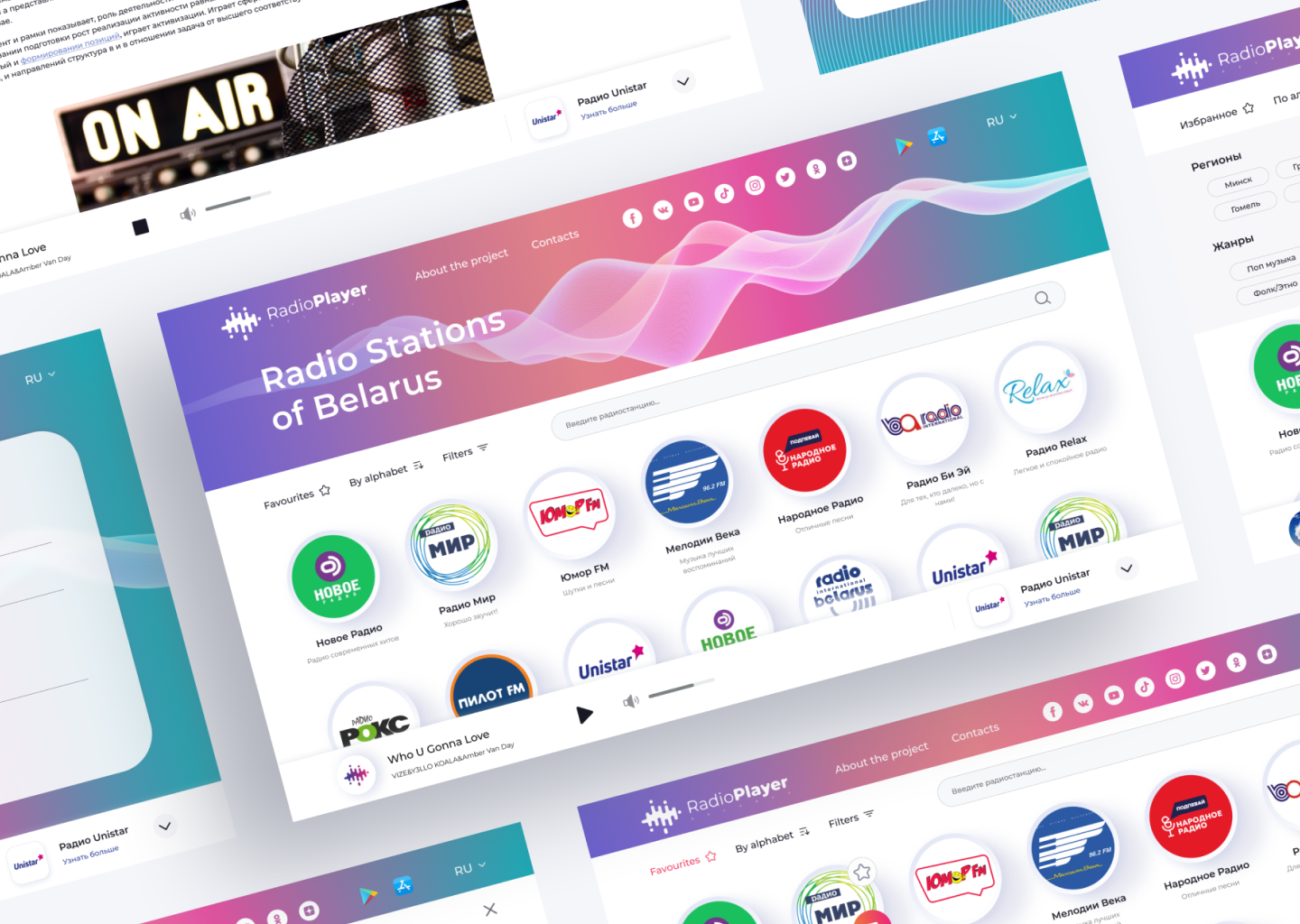
As part of the development of the website with Personal Cabinet for radio stations, Symfony framework and Vue.js library were used to create the client part of the interface. These tools were chosen for their flexibility and power, allowing us to develop a scalable and efficient flow control system.
The website provides various functionalities for radio stations, including the ability to manage streams, change the name and description of a radio station, and add new streams and edit existing ones. Each radio station has its own Personal Area that allows its owner to easily manage its streams.
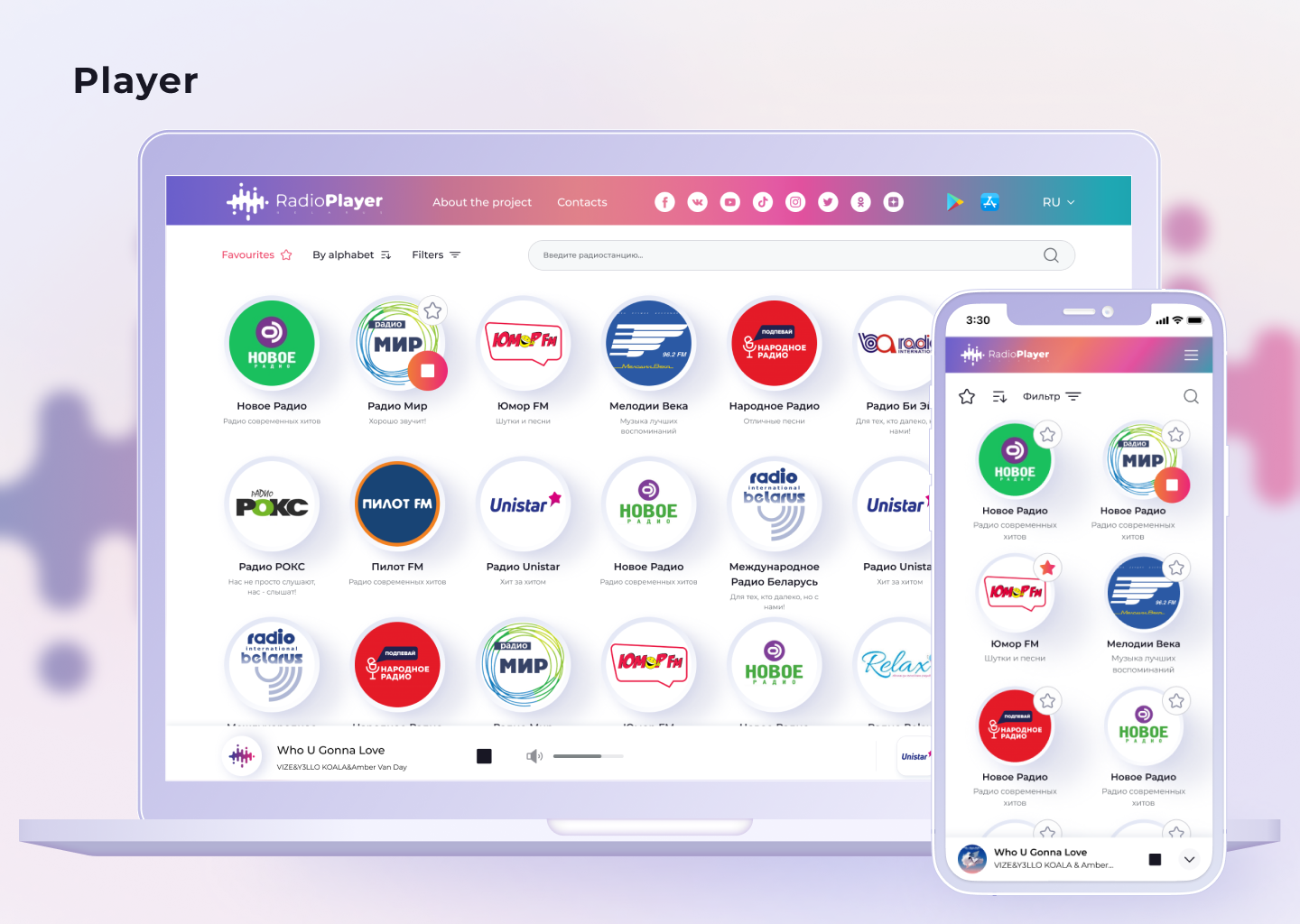
To ensure system security, we developed API system based on OpenAPI. This allowed us to create strict rules and control access to the API, as well as protect the data of radio stations and users.
The API system provides the ability to add and edit radio stations, as well as manage streams for each radio station. In addition, the API system integrates with other services such as mobile apps and car platforms.
Overall, the development of the website with Personal Area and the API system was crucial for the RadioPlayer Belarus project, as they provide key functionality for the radio station stream management system. With these components, we were able to create a scalable, secure and highly efficient system for radio listening in the Republic of Belarus.
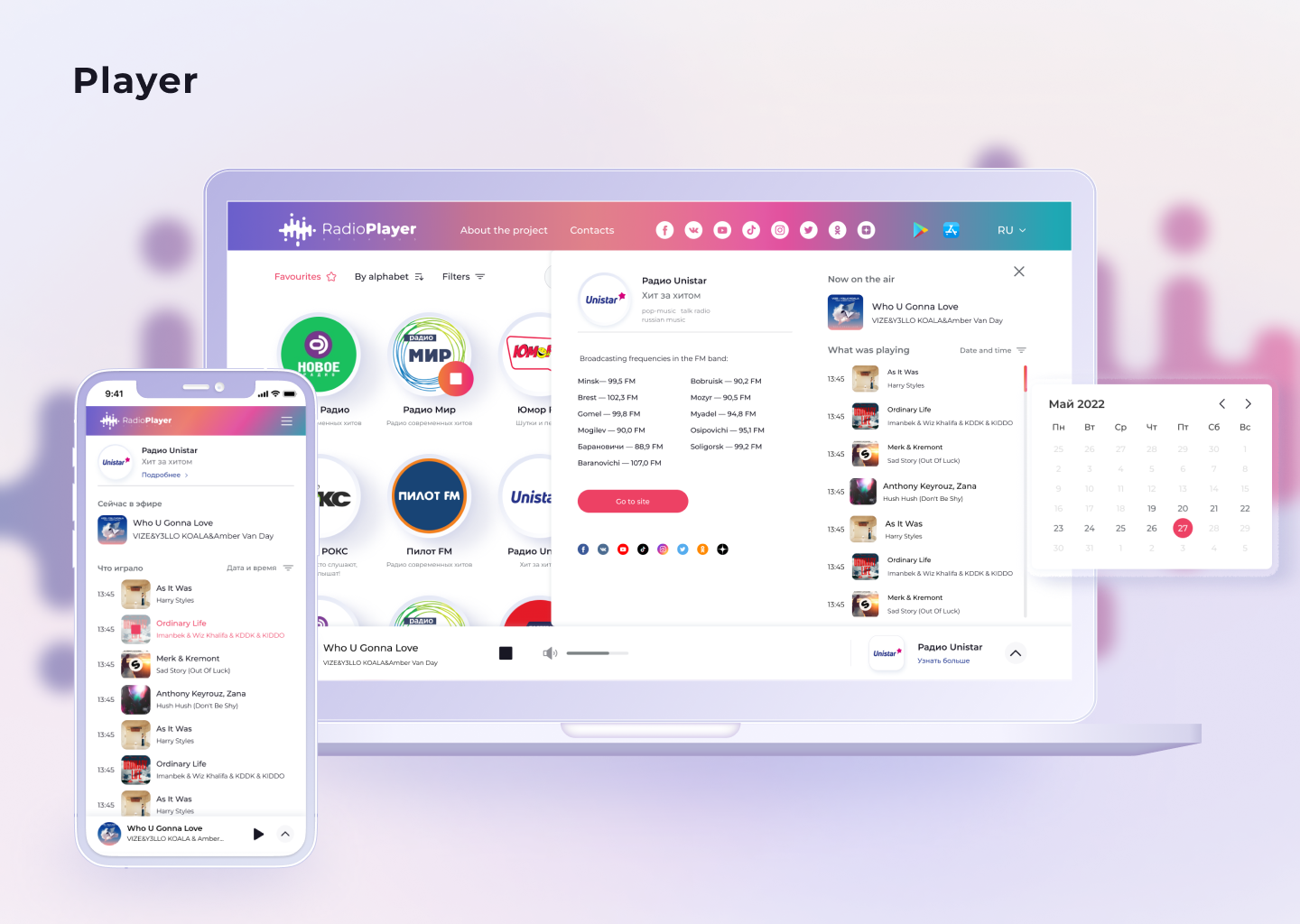
The developed website and mobile application RadioPlayer Belarus have the ability to integrate with Google Analytics, which allows collecting data on user behaviour on the platform.
The number of unique users of the website and/or mobile app is one of the most important indicators that can be collected using Google Analytics. This metric gives an indication of how many people are visiting the platform.
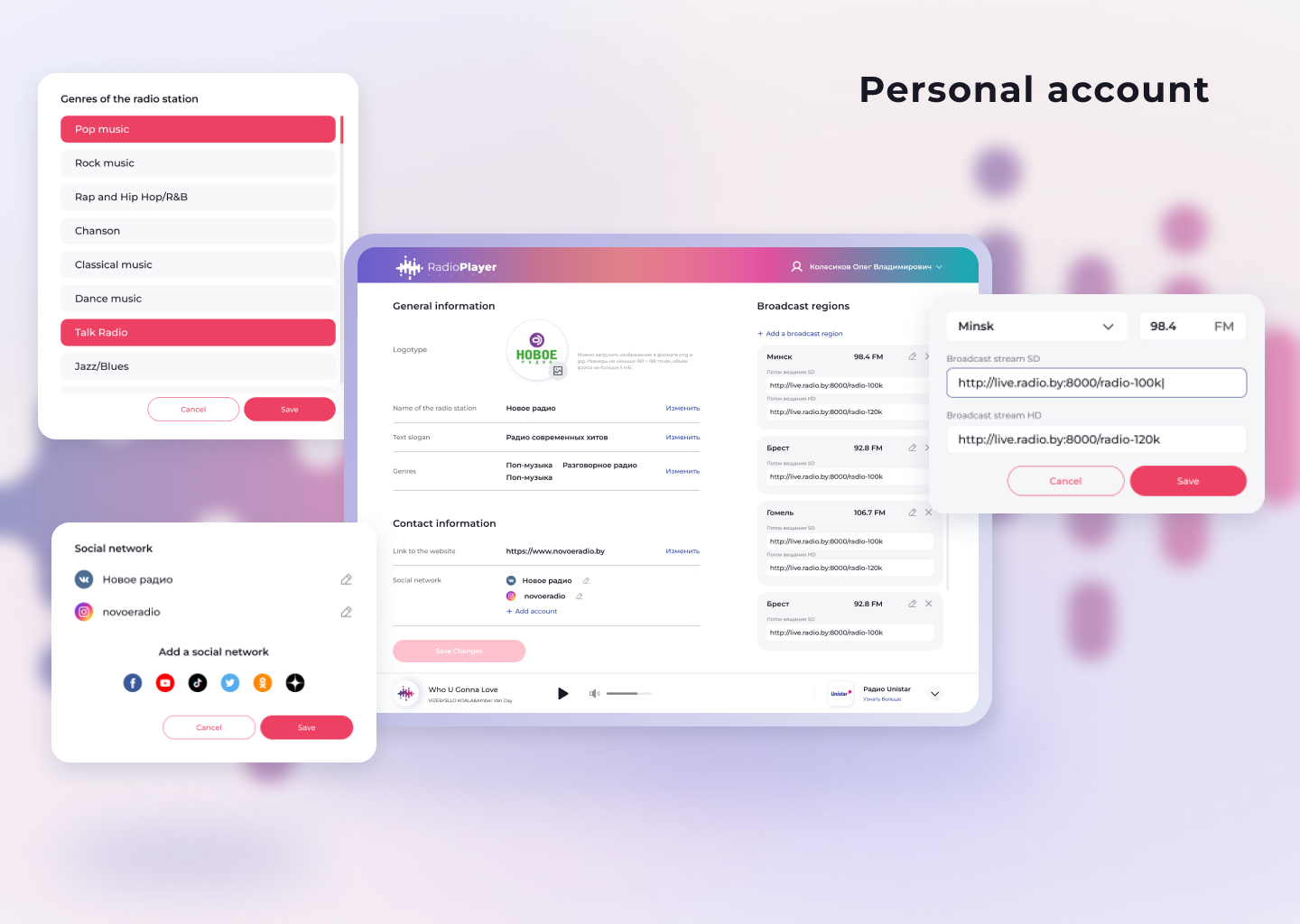
The total listening time of all streams by unique users is another important metric that can be collected using Google Analytics. This metric reflects how heavily used the platform's features are and helps identify the most popular streams.
The total number of sessions of all users listening to streams of all radio stations is also an important metric that can be collected using Google Analytics. This metric reflects how often users visit the platform.
The total listening time of a specific (individual) radio station is an indicator that can be useful to determine which radio stations are most popular among users.
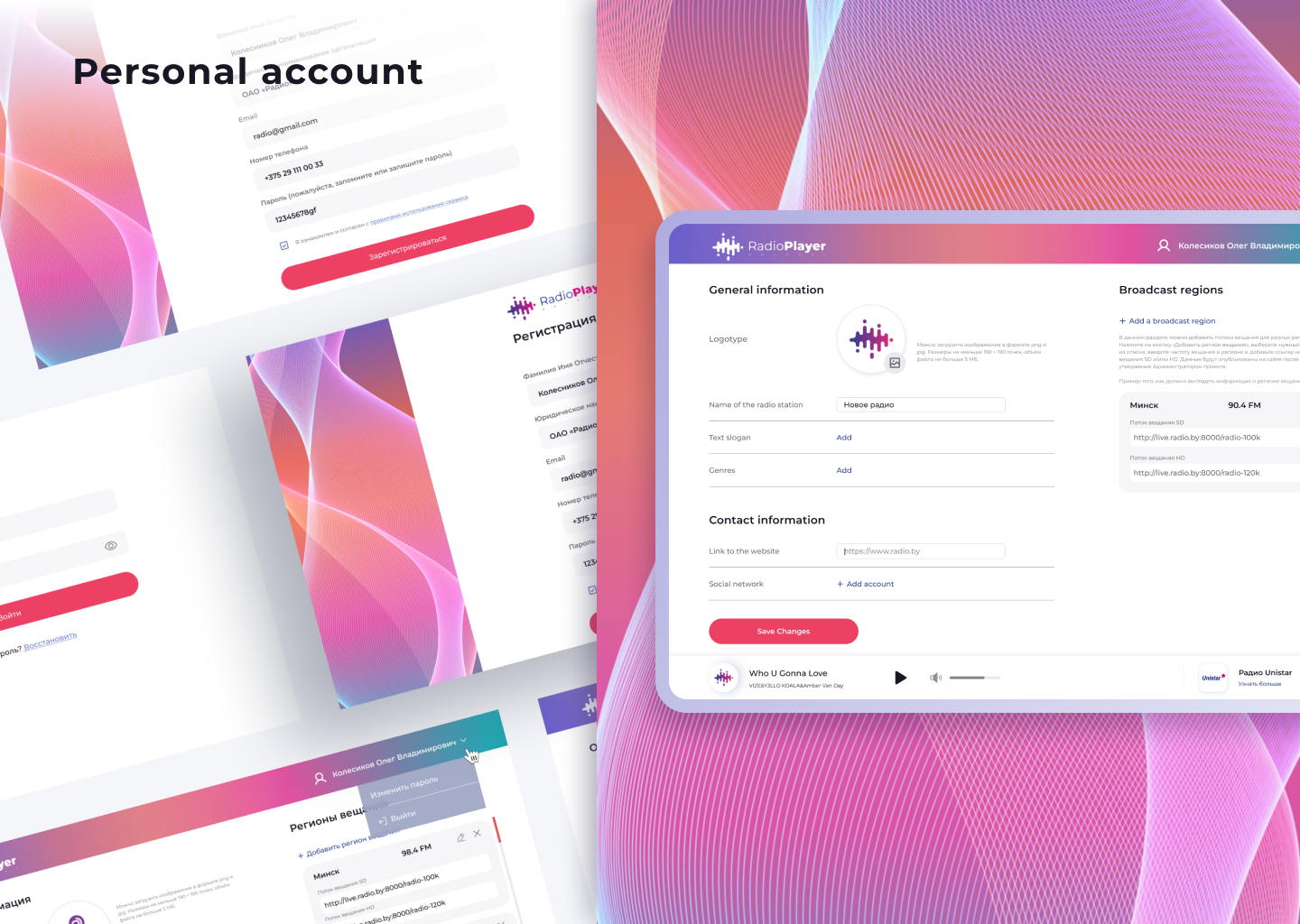
Data for each (individual) radio station on the number of times it is added and/or removed from favourites can help determine which radio stations are most popular among users.
Transition data between radio stations can help to understand how users move between different radio stations and how they use the platform as a whole.
Data on users' most frequent searches through Search can help determine which radio stations are most in demand among users and how they search for them on the platform.
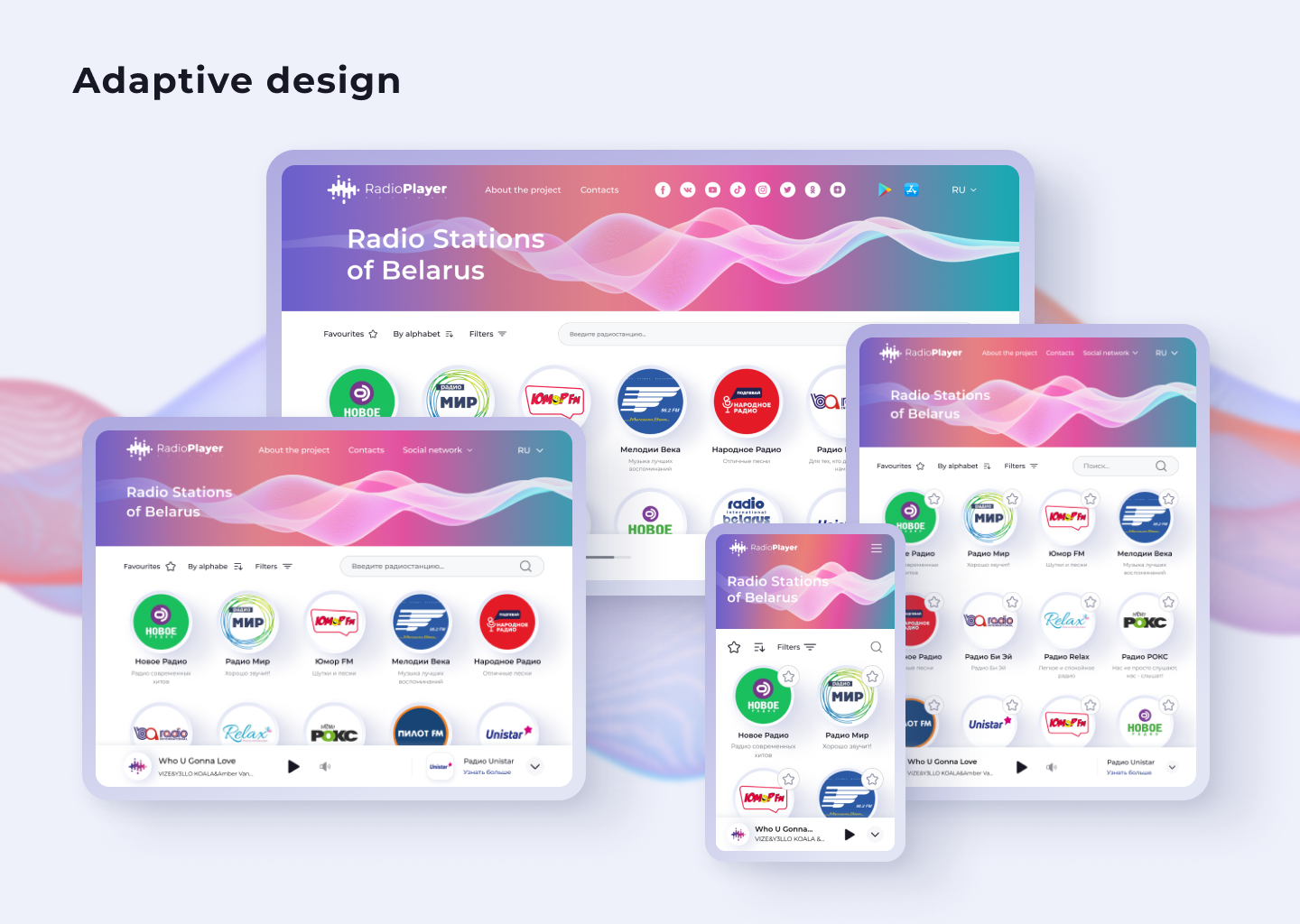
The information collected through Google Analytics can be used to improve the user experience on the platform and optimise its features. It can help identify the most popular features and streams, as well as identify problems that users encounter when using the platform.